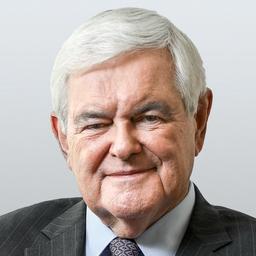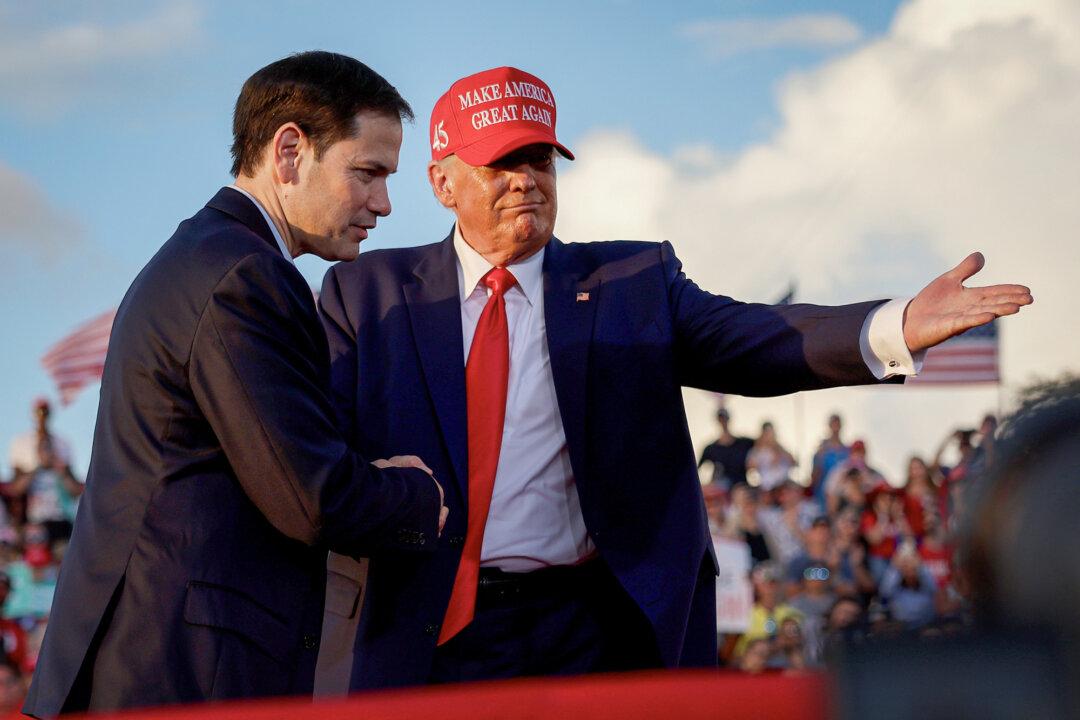As Callista and I sat in the Rotunda listening to President Donald Trump’s Inaugural Address, I realized that it was among the most revolutionary inaugural addresses in American history. If Trump achieves the great changes he described in those 30 minutes, he will be the most consequential president since Abraham Lincoln.
This morning, I read President Thomas Jefferson’s first and second inaugural addresses (1801, 1805), President Andrew Jackson’s first inaugural (1829), and President Franklin D. Roosevelt’s first inaugural (1933). All are well worth reading.
Jefferson did an astonishing job in his first address explaining the importance of the peaceful transfer of power—and the obligations of citizens to respect each other if the system is going to work. Jefferson helped found the Democratic-Republican party (later to evolve into the Democratic Party) to compete with the Federalist Party. It was a daring and difficult thing to do. The world was being shaken by the brutality and bloodshed of the French Revolution. The revolutionaries had guillotined the king and queen and hundreds of aristocrats. They then began guillotining the people they disliked in their own ranks. That revolution finally burned out when Napoleon Bonaparte used military force and returned France to autocratic government.
In this setting, Jefferson was dealing with the concept of loyal opposition within the framework of the Constitution. In monarchical states, overt opposition was taken to be treason. This was important because in those days, the president and vice president were elected separately. You could have a genuinely oppositional White House. The power struggle between President John Adams and his vice president, Jefferson, was real. There was some real confusion about the line between sedition and the legitimate process of disagreeing and struggling for power.
Jefferson’s first inaugural is almost a classroom lecture on the duties of citizenship and the importance of competing without destroying. Yet neither of Jefferson’s inaugurals was even faintly like Trump’s extraordinary revolutionary second inaugural.
I turned next to Jackson. He had a naturally fiery and aggressive personality. He felt the election of 1824 had been stolen from him. (He got 40 percent of the vote, but the other two candidates banded together to beat him in the House of Representatives.) A little bit like Trump, Jackson had campaigned for four years as a populist against the Eastern establishment. However, his inaugural address is surprisingly mild and reassuring. He could have been as tough on departing President John Quincy Adams as Trump was with the betrayals and failures of the Biden–Harris administration, but Jackson was much milder and more conciliatory.
Finally, the most revolutionary inaugural speech before 2025 was Roosevelt’s. Roosevelt was taking office during a Great Depression that had led to the greatest industrial unemployment in American history. Banks were relentlessly foreclosing on homes and small businesses. Farmers had no market for their crops. The old order had failed, and Roosevelt used his inaugural to drive this fact home.
FDR called for bold and dramatic changes, but they were less explicit and detailed than those in Trump’s inaugural address.
The amazing thing about Trump’s revolutionary rejection of the old order was that it occurred in five different areas. It was decisive in each: cultural, governmental, political, economic, and regarding the United States’ role in the world.
First, the most important break from the old order was the cultural repudiation of the left in virtually every direction. The emphasis on winning, the work ethic, and merit was a total repudiation of “wokeism” and diversity, equity, and inclusion. The explicit statement that there are only two sexes, male and female, struck at the heart of the left’s rejection of objective truth. The insistence on teaching patriotism is a direct confrontation with the left’s passion for undermining and diminishing the United States. The degree to which a religious spirit surrounded and permeated the entire inaugural experience was unprecedented. Trump exhibited the greatest willingness to be surrounded by religious activity since Roosevelt went on radio and led the nation in prayer as our young men stormed the beaches of Normandy on D-Day 1944. Contrast the music, prayers, and religious leaders in attendance with what you would expect at a left-wing gathering.
Second, the instructions that all federal workers must come back to work or face termination is a signal of how directly and aggressively Trump intends to overhaul and shrink the federal government. The nominees for Cabinet he has sent to the Senate all share the same entrepreneurial spirit, commitment to the Make America Great Again philosophy, and willingness to take on the old order and the bureaucracy that created it.
Third, Trump’s direct appeal to African Americans and Latinos—and his pledge to work with them—and his gratitude to the auto workers represents a continuation of his growing appeal. Many voters who used to be Democrats have proven to be increasingly willing to shift to a Trump-led Republican Party.
Fourth, a Trump energy system is radically different from the climate-crazed, economically destructive, and bureaucratically implemented left. His commitment to making the United States the leading energy producer takes head on one of the greatest goals of the modern left. They want less energy; Trump wants more. They want to close off land for development. Trump wants to make development easier and more profitable. They want to strangle the industry until it dies. He wants to create jobs and more export opportunities. They want higher taxes. Trump wants lower taxes. They want a trading system that continues to export American jobs to foreign countries. Trump wants a system based on growing American businesses and making the United States the economic leader on every front. They want bureaucracies to dominate and define how people live. Trump wants maximum free choice. He wants people to be citizen-customers, not obedient servants.
Fifth, and finally, the Trump approach to an American-centered foreign and defense policy is a decisive break with the post-Cold War effort to define and dominate the entire planet. The establishment loved policing, educating, funding, and giving priority to the feelings of others, including our enemies. In the name of some humanitarian internationalism, the United States was supposed to spend the blood of its young men and women—and the money of its taxpayers—on a wide range of dictatorships and badly run countries. The Gulf of America described by Trump is the symbol of a startling break with the passivity and maintenance of status quo, which defined the last generation since the collapse of the Soviet Union.
With these five major breaks from the old order—and their initial implementation through a blizzard of more than 200 executive orders in the first 24 hours—Trump has made it clear he intends to govern as he campaigned. He is the advocate of working class interests and American interests. It was an extraordinary start to what I suspect will be an extraordinary presidency of historic consequence.







